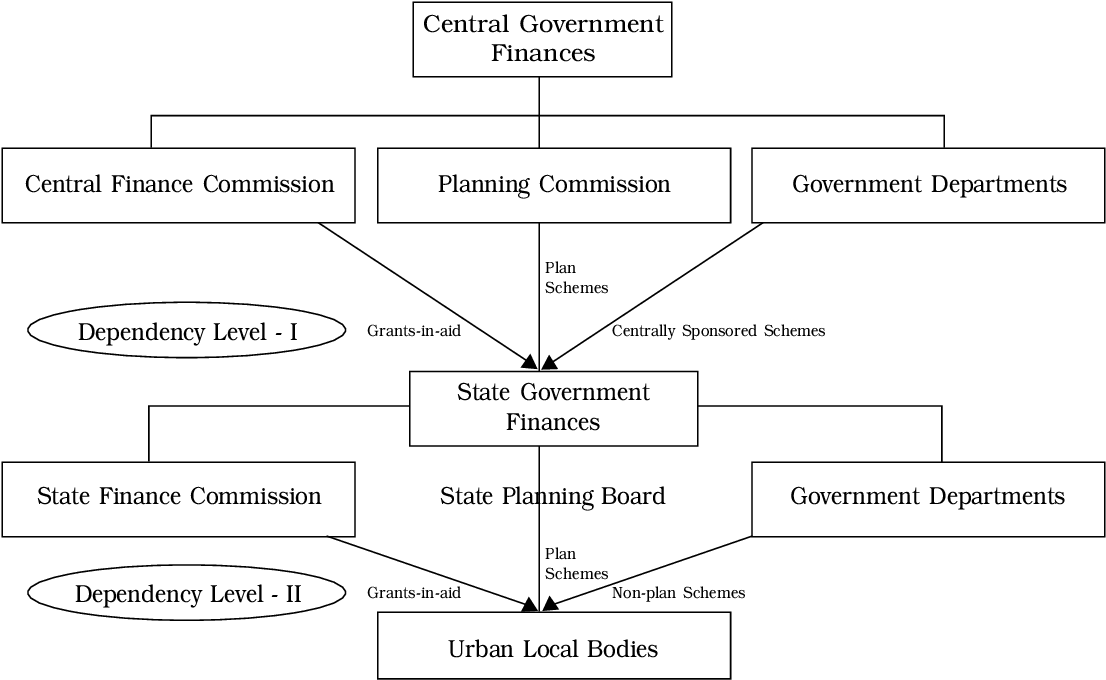Why in news?
A recent report on urban financing for India is another case of a top down approach that is over dependent on technocentric solutions and capital-intensive technologies.
What is the case of urbanization in India?
- Urbanization - Urbanization is the increase in the proportion of people living in towns and cities.
- Urbanization occurs because people move from rural areas to urban areas (towns and cities).
- Trend in India - In 2021, approximately a third of the total population in India lived in cities.
- Major causes of urbanization
- Industrialization
- Commercialization
- Better services in urban areas
- High standard of living
- Ample employment opportunities
- Modernization
- Rural-urban transformation
What are the findings of the World Bank report?
- Focus area - The World Bank report focuses on private investments ameliorating urban problems.
- Source of urban finance - After three decades of reforms, urban finance predominantly comes from the government.
- Of the finances needed to fund urban capital expenditures, 48%, 24% and 15% are derived from the central, State, and city governments, respectively.
- Public-private partnership projects contribute 3%.
- Government revenue - The report points out that nearly 85% of government revenue is from the cities.
- WB estimates - The World Bank (WB) estimates that nearly Rs 70 lakh crore would be needed for investment in urban India to meet the growing demands of the population.
- Suggestion - The solutions suggested include improving the fiscal base and creditworthiness of the Indian cities by enhancing the tax base.

What are the issues?
- Demand and supply gap - Matching the gap between demand and supply is a major challenge.
- The flagship programmes such as the Smart City mission, the Atal Mission for Rejuvenation and Urban Transformation (AMRUT), the Pradhan Mantri Awas Yojana (PMAY), etc., are not more than Rs. 2 lakh crore.
- Skepticism in enhancing the tax base - Meeting the rising demands of urban infrastructure in the cities even by enhancing the tax base remains skeptical.
- Top to bottom approach - The basic problem with this report is that it is made using a top to bottom approach, with too much of a focus on technocentric solutions.
What is the need of the hour?
- Plans must be made from below by engaging with the people and identifying their needs.
- The city governments and the people need to be empowered.
- The recommendations of the national task force that reviewed the 74th Constitutional Amendment, chaired by K.C. Sivaramakrishnan can be implanted. It includes
- Empowering the people
- Transferring subjects to the city governments
- 10% of the income-tax collected from cities be given back to them
- Ensuring that this corpus fund was utilised only for infrastructure building
- Regular elections should be held in cities and there must be empowerment through the transferring of the three Fs: finances, functions, and functionaries.
The 74th Amendment Act of 1992 provides a basic framework of decentralisation of powers and authorities to the Municipal bodies at different levels.
Quick facts
- The Smart City mission - To promote cities that provide core infrastructure, clean and sustainable environment and a decent quality of life to their citizens through smart solutions
- The Atal Mission for Rejuvenation and Urban Transformation (AMRUT) – To provide basic services (e.g. water supply, sewerage, urban transport) to households and build amenities in cities to improve the quality of life for all
- The Pradhan Mantri Awas Yojana (PMAY) - To provide affordable housing to the urban poor by the year 2022
Reference

Post a Comment
We welcome relevant and respectful comments. Off-topic or spam comments may be removed.